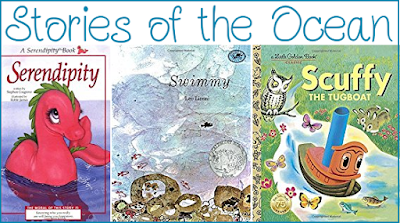I've found many guides to extra resources for Story of the World (and made one!). Check them out below. If you know of any others, please share in a comment!
ALL VOLUMES
Ultimate Guide to Story of the World (Learning Mama)
Free Printables for Story of the World (Homeschool Giveaways)
Story of the World Guide (Life-Schooling)
Story of the World Guide (Muse of the Morning)
Story of the World - Netflix Movie List (Mommy Lawyer)
Story of the World Planners (Bare Foot Meandering)
Story of the World - You Tube Video List (SOTW Video Links)
Story of the World Lapbooks (Brenda Johnston)
Story of the World and Other Curriculum
(Schedules for merging various other curriculum with SOTW)
Resource and Activity Guide - Story of the World (Muse of the Mom)
Story of the World Alignment to Other Books and Curriculum
VOLUME I
Story of the World Volume I Lesson Ideas (Imaginative Homeschool)
This is my resource. It's not finished, but being added to gradually.
Loving Learning as We Go Guides
Life-Schooling Volume 1 Guide
Usborn World History Resources - Ancient Times (Muse of the Mom)
While this is technically for Usborn, it aligns well with Story of the World.
Story of the World Resources (Eclectic Homeschool)
Story of the World Lesson Plans (Home is Where the Heart Is)
Magic Treehouse and SOTW - Aligned Reading Guide for Vol 1
Imagination Station and SOTW - Aligned Reading Guide for Vol 1 (Laura McKinney Adams)
Story of the World Vol 1Chapter by Chapter (Inspiring 1 NH Kids)
(There
are more than just the following chapters, but they aren't organized
that I can tell in any central location, so you'll have to hunt around
her blog for them)
Chapter 1
Chapter 2
Free History Curriculum at Field of Daisys
Her bookslists and video lists are easy to line up with Story of the World.
SOTW Videos for Middle Schoolers
Middle school level video lessons aligned with every chapter of SOTW (eventually...they are being added currently), each 10-15 minutes long. These delve more in-depth, using information from Susan Wise
Bauer's "The History of the Ancient World."
The Boys of Black Mountain (all history posts, most related to SOTW)
Note: Ignore the unit numbers on this. They are unrelated to the chapters. Really neat activities though!
VOLUME II
Loving Learning as We Go Guide
(Scroll down for Volume II guides. This one also is still being added to. I imagine eventually she'll have guides for Volumes III and IV too)
Magic Treehouse and SOTW (Aligned Reading Guide for Vol 2)
Volume III
Songs for Story of the World - Early Modern Times - By Chapter
General History Resources
Massive Homeschool History Guide
History Art Projects


















